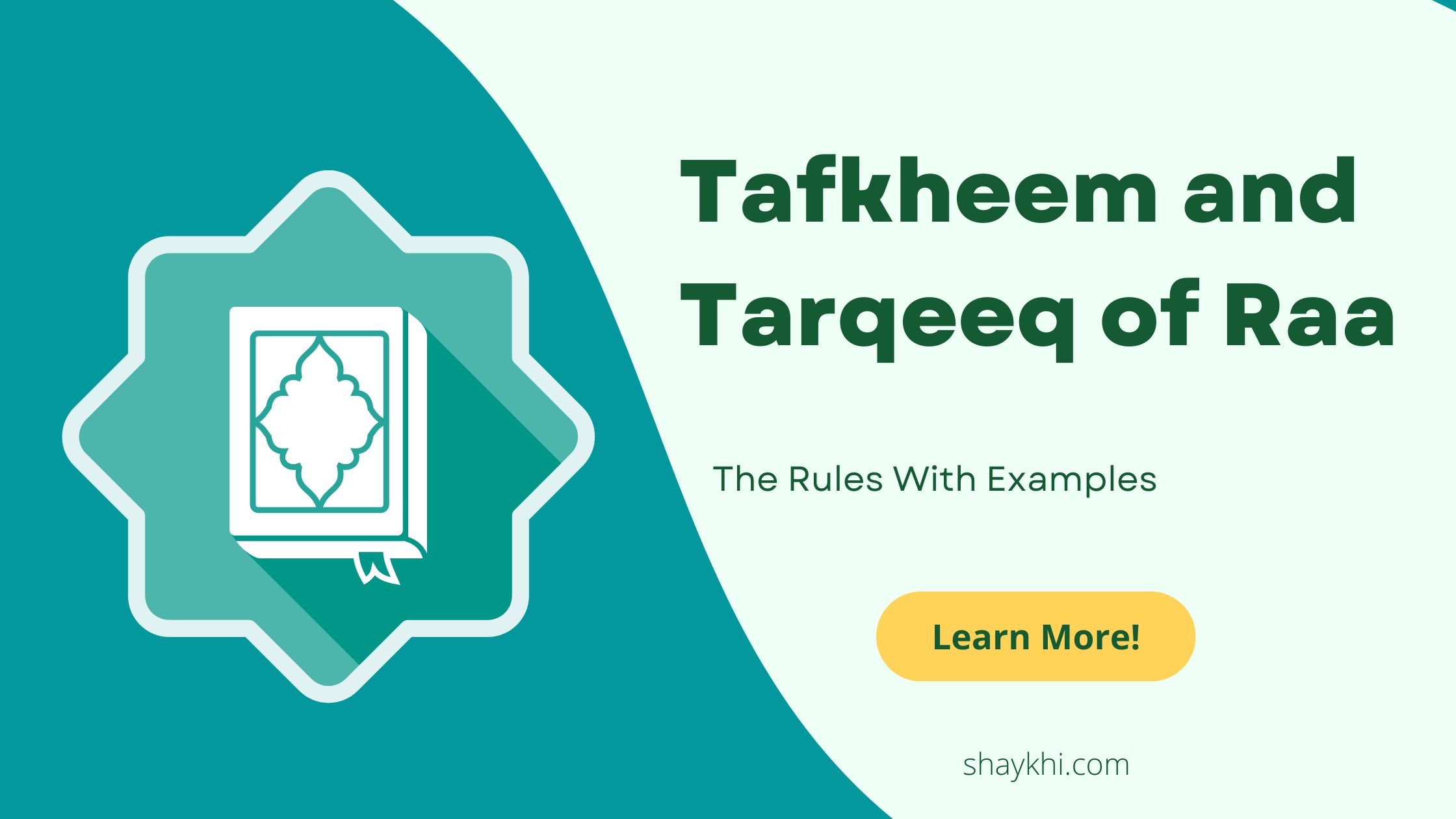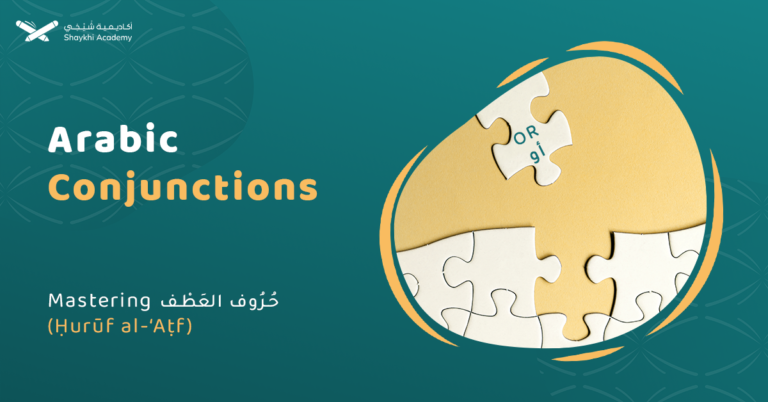The letter “Raa” in Tajweed can be pronounced with either Tafkheem (emphasis) or Tarqeeq (lightness), depending on its position, the surrounding letters, and the associated vowel marks. Tafkheem thickens the sound, making it heavier, while Tarqeeq lightens it, resulting in a softer pronunciation. Understanding and applying these rules enhances the beauty and clarity of Quranic recitation, allowing for a more profound connection with the divine text.
Mispronouncing the “raa” can lead to significant changes in meaning, thus understanding and applying these rules is essential for anyone dedicated to mastering Quranic recitation.
This essay delves into the detailed rules governing the tafkheem and tarqeeq of the letter “raa,” providing clear examples and explanations to aid in understanding. By exploring the six well-known cases where the pronunciation of “raa” changes, we aim to offer a comprehensive guide that will benefit both novice and experienced reciters.
Introduction To Understad the Phonetic of Letter Raa
The Arabic language is rich with phonetic rules that enhance the beauty and clarity of recitation, especially when it comes to the Quran. Among these rules are those related to the pronunciation of the letter “raa” (ر). Which can be pronounced with tafkheem (emphasis) or tarqeeq (lightness). The proper articulation of these sounds is fundamental to ensuring the eloquence and precision of Quranic recitation.
In Arabic phonetics, tafkheem (emphasis) involves a thickening of the sound, making the letter “raa” heavier and more resonant. Tarqeeq (lightness), on the other hand, refers to a more delicate and lighter pronunciation. The differentiation between these two sounds hinges on various factors such as the position of the letter in the word, the surrounding letters, and the specific vowel marks (harakat) that accompany the “raa.”
Meaning Of Tafkheem (Emphasis) and Tarqeeq (Lightness) of Raa (التفخيم والترقيق للراء)
Tafkheem, or emphasis, refers to the thickening of the sound when pronouncing the letter “raa,” making it heavier. On the other hand, tarqeeq, or lightness, involves a lighter and more delicate pronunciation. The pronunciation of “raa” changes based on its position in the word, the surrounding letters, and the harakat (vowel marks).
Rules of Tafkheem and Tarqeeq for Raa (قواعد التفخيم والترقيق للراء):
There are six famous cases where the pronunciation of “raa” differs, categorized as either tafkheem or tarqeeq. Below, we explore each case with examples from the Holy Qur’an:
1– Raa with Fatha or Damma (راء عليها ضمة أو فتحة):
Rule: “Raa” is pronounced with tafkheem when it has a fatha ( ـَ ) or damma ( ـُ ).
Example:
“رَبَّكُم” (Rabbakum) – Your Lord
“رُسُلُهُ” (Rusuluhu) – His Messengers
2- Raa with Kasra (كسرة):
Rule: “Raa” is pronounced with tarqeeq when it has a kasra ( ـِ ).
Example:
“رِزْقًا” (Rizqan) – Provision
3- Raa with Sukoon after Fatha or Damma(راء ساكنة بعد الفتح أو الضم):
Rule: “Raa” is pronounced with tafkheem when it is sakin ( ـْ ) and the preceding vowel is a fatha or damma.
Example:
“قَرْنَ” (Qarn) – Century
“قُرْآن” (Quran) – Quran
4- Raa with Sukoon after Kasra(الراء الساكنة بعد الكسر):
Rule: “Raa” is pronounced with tarqeeq when it is sakin and the preceding vowel is a kasra.
Example:
“فِرْعَوْنَ (Fir’aun)
5- Raa in the case of Stopping (Waqf) (حالات الراء عند الوقف):
Rule: When stopping on “raa,” its pronunciation follows the vowel before it. If the preceding vowel is a fatha or damma, tafkheem is applied. If it is a kasra, tarqeeq is applied.
Example:
“الفجرْ” (Al-Fajr) – The Dawn (Tafkheem due to preceding fatha)
“الخيرْ” (Al-Khayr) – The Good (Tarqeeq due to preceding kasra)
6- Raa with Sukoon in the Middle of a Word (الراء الساكنة وسط الكلمة):
Rule: “Raa” is pronounced with tafkheem if the preceding vowel is a fatha or damma, even if the “raa” is in the middle of the word.
Example:
“الْمُرْسَلِينَ (al-mursaleen)
Illustrative Tables and Examples from the Holy Qur’an
To further clarify these rules, the following tables provide examples from the Holy Qur’an along with their literal translations:
| Case | Arabic Text | Transliteration | The rule |
| 1. Raa with Fatha | رَبَّكُم | Rabbakum | tafkheem |
| 1. Raa with Damma | رُسُلُهُ | Rusuluhu | tafkheem |
| 2. Raa with Kasra | رِزْقًا | Rizqan | tarqeeq |
| 3. Raa with Sukoon after Fatha | قَرْنَ | Qarn | tafkheem |
| 3. Raa with Sukoon after Damma | قُرْآن | Quran | tafkheem |
| 4. Raa with Sukoon after Kasra | فِرعَون | firaun | tarqeeq |
| 5. Stopping on Raa with Fatha | الفجرْ | Al-Fajr | tafkheem |
| 5. Stopping on Raa with Kasra | الخيرْ | Al-Khayr | tarqeeq |
| 6. Raa with Sukoon in the Middle | قراءة | Qiraa’a | tafkheem |
These tables illustrate the phonetic intricacies of the letter “raa” and how its pronunciation alters the recitation, thereby enhancing the eloquence and beauty of the Qur’an.
The Importance of Mastering Tafkheem and Tarqeeq in Quranic Recitation
Mastering the rules of tafkheem and tarqeeq is not just about achieving phonetic accuracy; it is deeply connected to the spiritual and emotional experience of Quranic recitation. When “raa” is pronounced correctly, it enhances the listener’s engagement and comprehension, allowing the beauty and majesty of the Quranic verses to resonate more profoundly.
Proper recitation can evoke a sense of awe and reverence, fostering a deeper connection with the divine message. Furthermore, adhering to these phonetic rules is a form of respect and devotion, ensuring that the reciter honors the sanctity of the Quran.
For learners and seasoned reciters alike, continuous practice and dedication to these rules will lead to more fluent and expressive recitation, enriching both personal worship and communal prayer experiences.
Benefits of Learning Tajweed with Shaykhi Academy
Learning Tajweed with Shaykhi Academy offers numerous benefits beyond mastering the rules of tafkheem and tarqeeq. The academy provides a structured curriculum designed to cater to students of all levels, from beginners to advanced learners.
With experienced instructors and personalized feedback, students not only refine their pronunciation but also deepen their understanding of Tajweed’s broader principles. Shaikhy Academy’s flexible learning approach allows students to study at their own pace, accommodating busy schedules without compromising on the quality of education.
Moreover, the supportive community at Saykhi Academy fosters a spirit of collaboration and encouragement, creating an enriching learning environment where students can grow both academically and spiritually.
By choosing Shaykhi Academy, students embark on a transformative journey towards becoming proficient reciters of the Quran, equipped with the knowledge and skills to excel in their recitation practice and spiritual development.
Why Choose Shaykhi Academy?
- Connect with highly qualified native tutors.
- Flexible scheduling to suit your busy lifestyle.
- Affordable classes tailored for all levels.
- Accessible from anywhere around the globe.
Discover Our Range of Courses:
- Arabic Noorani Qaida: Lay a solid foundation for Quranic studies.
- Online Quran Classes for Kids: Engaging lessons for lifelong learning.
- Tajweed Rules for Kids: Learn to recite with confidence.
- Quran Hifz for Kids: Step-by-step guidance to memorize the Quran.
- Quran for Adults: Introduce yourself to Quran reading and Tajweed rules.
- Online Arabic Courses: Master the language of the Quran.
- Islamic Studies: A wide range of topics related to Islam, including theology, law, Quranic studies, and Hadith.
Don’t Miss Out on Your Chance to Excel! Whether you’re a beginner or seeking advanced knowledge, Shaykhi Academy can guide you! Book your free trial now
Conclusion
Understanding the rules of tafkheem and tarqeeq for the letter “raa” is crucial for proper Quranic recitation. These rules, while detailed, provide a systematic approach to ensuring that recitations are both correct and melodious.
By practicing these rules and reflecting on the examples from the Qur’an, one can achieve greater precision and beauty in their recitation. This essay has focused on the six famous cases of tafkheem and tarqeeq for “raa,” offering a comprehensive guide for learners and enthusiasts of the Quran.















































